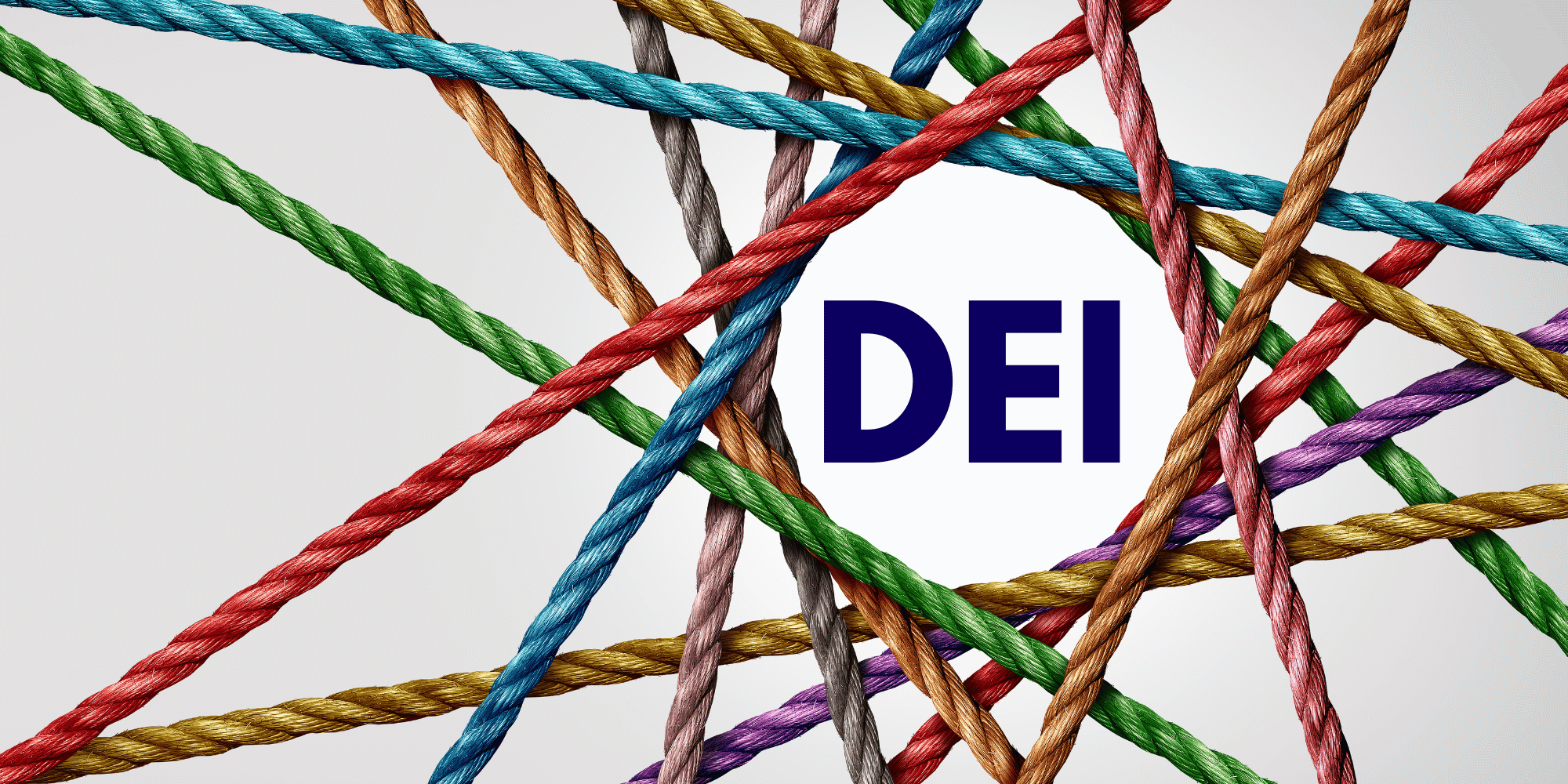Expanding and improving Diversity, Equity, and Inclusion (DEI) in US-based companies is often focused on the employee experience -- from hiring practices that center recruitment of diverse talent – to retention policies and practices that are attentive to diverse employees and diverse needs.
According to recent research, diversity in the workplace—with true inclusion—matters not only to employees, but also customers, and is critical to long-term business growth. In fact, one recently published six-year study found that more ethnically and culturally diverse businesses (PDF) are as much as 36% more profitable than the least diverse companies; this profitability gap widens to 48% between the most and least diverse businesses based on gender alone.
There is a business case for a diverse, equitable, and inclusive workforce, which is critical given the growing consumer and investor demand for such progress as part of sustainability and ESG benchmarks and reporting. At the same time, we are learning that a commitment to DEI does not need to (nor should it) be contained only within the corporate walls to have pronounced impact.
In addition to a focus on employees, one of the most powerful DEI actions a company can take is to support diverse business partners and significantly increase their spending with diverse suppliers and vendors in their value chain. By making its value chain—a product's journey from raw materials to post-consumption—more diverse and equitable, a company can redirect its core business with significant impact returns.
What are the Challenges to Creating Diverse Value Chains?
Companies are recognizing that a common and longstanding strategy of charitable investments is not enough to internalize and operationalize DEI along the value chain. For example, a survey from JUST Capital identified increasing business with minority-owned suppliers as one of the most important actions a company can take to advance DEI. And many companies agree. In the United States alone, between 2017-2020, companies spent on average 54% more on diverse suppliers.
Although this is a positive trend, many corporate sustainability teams tell us their companies aren’t seeing change, or taking action across the business fast enough, to meet their DEI targets.
Progress can also be slow even for companies that take their DEI commitments seriously. It can take considerable time for large companies to find, evaluate, and forge connections with new suppliers and vendors. On top of that, in many markets or industries, minority-owned and under-represented businesses don’t exist at the scale or scope needed given the systemic challenges and barriers they have had to and continue to face.
What are some of the most immediate strategies that companies can implement to improve DEI impact across their value chains?
5 Ways to Create a Diverse Value Chain
Companies that are serious about DEI must be prepared to commit additional time and resources to finding and enabling diverse suppliers across their target markets and value chains.
Here are five ways companies can build a more inclusive and diverse value chain.
1. Conduct a comprehensive evaluation of DEI challenges opportunities across the full value chain
Companies should spend some time to better understand the challenges and opportunities that exist for implementing DEI initiatives and strategies to increase the probability of greater impact. This includes thorough understanding and mapping of the landscape in which an organization’s supply and value chains are embedded.
A traditional value chain analysis helps a company identify areas that can be optimized for efficiency and profitability. An analysis with an eye toward integration of DEI approaches and strategies has vastly different aims, though both converge around the notion that change can improve a company’s value proposition, and help it stand out in the marketplace, with the latter delivering greater societal and environmental impact that is measurable and reportable.
Integral to ultimate success is a comprehensive evaluation across the full value chain to:
- Identify where change is needed most and where there might be the greatest return in investment in DEI focus.
- Illuminate existing resources to implement change in the form of new or expanded initiatives and strategies.
- Define any gaps in resources, as well as potential challenges or bottlenecks (a good tool is the Ladder of Abstraction to determine what might halt or delay initiatives).
- Identify and map champions and opportunities to advocate for change and possible initiatives, identifying potential theories of change to move your team into goal-setting.
2. Set a Concrete Goal and Ensure the KPIs and Resources of Key Teams Are Aligned
When it comes to diversifying the value chain, it helps for leadership to make concrete, measurable commitments. This could be a commitment to allocate a certain amount or percentage of procurement spend to diverse suppliers and vendors. Many leading companies—from Target to GM to SAP to Unilever to UPS—have done just that, setting significant targets in this arena.
But to realize these goals, a company also needs to set aside resources and create incentives for key teams: This might mean, for example, aligning the KPIs of procurement teams to company-wide DEI commitments or allocating additional funds and staff to identify, onboard, and mentor new diverse suppliers.
3. Look to Make Your Own Policies and Systems More Flexible
Diverse suppliers and vendors face numerous barriers to growth. Companies can either add to these barriers or help tear them down. To start, a company can adapt its procurement policies and processes to make them more flexible to remove barriers to entry for small, minority-owned businesses.
For example, recognizing that access to capital is a major barrier for their diverse suppliers, Walmart and Sam’s Club have partnered with C2FO, a technology company, to create an expanded early payment program that offers diverse or minority-owned suppliers faster payments to improve access to working capital.
4. Invest in Diverse Suppliers' Growth and Capacity
Any small business might struggle upfront to meet the volumes and timelines requested by large companies. Here, large buyers can play a pivotal role in investing in the capacity of diverse suppliers, for their existing or future value chain. To do this, companies are partnering with development finance providers and launching accelerators to help diverse suppliers ramp up their business.
As an example, Amazon recently launched the Black Business Accelerator to build equity and sustainable growth for Black-owned businesses. The initiative seeks to help Black-owned businesses overcome longstanding inequalities in access to capital, mentorship, and growth opportunities by providing financial support, business education, and promotion of their brands and products as third-party sellers on Amazon’s online platform.
5. Create Strategic Partnerships with Your Tier 1 Suppliers and the Wider Ecosystem
For many companies, creating a truly diverse and inclusive business means promoting greater diversity across several supply chain tiers. This means developing partnerships with existing Tier 1 suppliers and vendors to advance DEI.
For example, Unilever has launched its Partner with Purpose program, an expansive initiative that aims to advance a range of environmental and social sustainability goals. Not only has Unilever committed to spending €2 billion annually with diverse businesses worldwide by 2025, but it has also invited its suppliers to “demonstrate their shared values and commitment to addressing social inequality in our value chain” by encouraging them to sign onto Unilever’s Supplier Equity, Diversity and Inclusion Promise.
Companies can also engage more broadly within their industry and beyond, to build shared pipelines of diverse suppliers across target markets, co-invest in supplier capacity and readiness, and better address the complex barriers that stand in the way of success.
Build a More Diverse Value Chain for Your Company with Cross-Sector Collaboration
Even implementing best practices for building a more diverse value chain will not result in overnight success. Meaningful results for DEI will take time, sustained commitment, innovative thinking, and deliberate action.
By bringing a cross-company perspective and centering equitable impact, corporate sustainability teams can play a transformative role in helping leaders and key business units take action on corporate DEI commitments. Today, we see more corporate sustainability teams helping their companies realign core business with DEI goals: They’re partnering with procurement teams, crafting new initiatives that bolster their company’s efforts, tracking impact, and directing sustainability budgets toward DEI solutions that make a difference.
We’re excited to see more corporate sustainability teams—and the companies they work for—reimagining value chains as a force for good. Companies interested in diversifying their value chain should consult an experienced third-party partnership builder to help them uncover and implement strategic, shared-value partnerships that can advance their corporate DEI goals.
Editor’s Note: This post has been updated for accuracy and current best practices.



